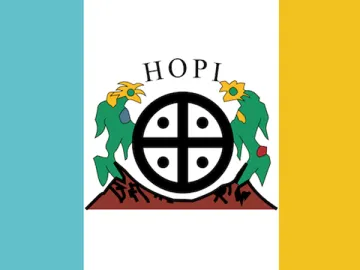
ARTICLE III-ORGANIZATION
SECTION 1.
The Hopi Tribe is a union of self-governing villages sharing common interests and working for the common welfare of all. It consists of the following recognized villages:
- First Mesa (consolidated villages of Walpi, Shitchumovi, and Tewa).
- Mishongnovi.
- Sipaulavi.
- Shungopavi.
- Oraibi.
- Kyakotsmovi.
- Bakabi.
- Hotevilla.
- Moenkopi.
SEC. 2.
The following powers which the Tribe now has under existing law or which have been given by the Act of June 18, 1934, (48 Stat. 984) and acts amendatory thereof or supplemental thereto, are reserved to the individual villages:
(a) To appoint guardians for orphan children and incompetent members.
(b) To adjust family disputes and regulate family relations of members of the villages.
(c) To regulate the inheritance of property of the members of the villages.
(d) To assign farming land, subject to the provisions of Article VII.
SEC. 3.
Each village shall decide for itself how it shall be organized. Until a village shall decide to organize in another manner, it shall be considered as being under the traditional Hopi organization and the Kikmongwi of such village shall be recognized as its leader.
SEC. 4.
Any village which does not possess the traditional Hopi self-government, or which wishes to make a change in that government or add something to it, may adopt a village Constitution in the following manner: A Constitution, consistent with this Constitution and Bylaws, shall be drawn up, and made known to all the voting members of such village and a copy shall be given to the Superintendent of the Hopi jurisdiction. Upon the request of the Kikmongwi of such village or of 25% of the voting members thereof, for an election on such Constitution, the Superintendent shall make sure that all voting members have had ample opportunity to study the proposed Constitution. He shall then call a special meeting of the voting members of such village, for the purpose of voting on the adoption of the proposed Constitution, and shall see that there is a fair vote. If at such referendum, not less than half of the voting members of the village cast their votes, and if a majority of those voting accepts the proposed Constitution, it shall then become the Constitution of that village, and only officials chosen according to its provisions shall be recognized.
The village Constitution shall clearly say how the Council representatives and other village officials shall be chosen, as well as the official who shall perform the duties placed upon the Kikmongwi in this Constitution. Such village Constitution may be amended or abolished in the same manner as provided for its adoption.
